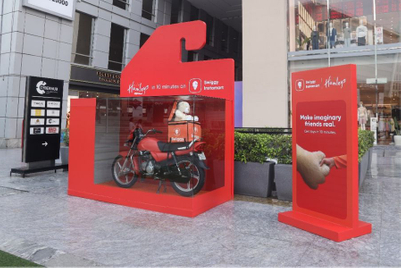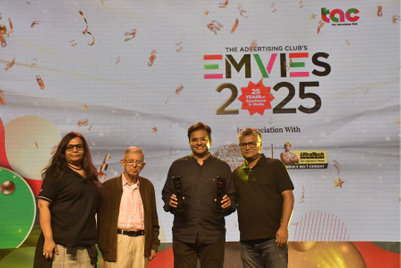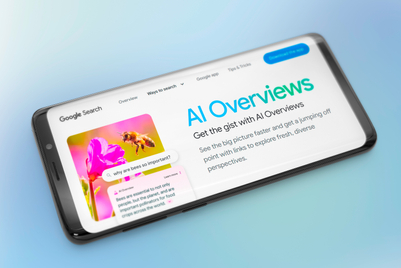
Havas Play India, the sports, entertainment, and content arm of Havas Media Network India, is undergoing a strategic leadership shift at a time when brands are sharpening their focus on the booming sports and entertainment economy. The move comes as India’s $52 billion sports sector hurtles towards a projected $130 billion valuation by 2030, fuelled by diversified sports formats, tech-driven fan engagement, and brand demand for deeper cultural relevance.
As part of its transformation, Uday Mohan will now oversee both Havas Media India and Havas Play India as COO, ensuring greater alignment across media, content, and experience. Prachi Narayan has been elevated to managing partner of Havas Play India, reporting to Uday and spearheading the integration of its four verticals—content, culture, commerce, and creativity—to deliver unified brand experiences.
The vertical heads under Narayan include Abhay Kumar (Entertainment), Niharika Goswami (Content), Uditvanu Das (Sports), and Geetika Thakur (Social). This streamlined structure, according to Mohit Joshi, CEO, Havas Media Network India, is designed to create agility and clarity.
“This new structure is a strategic step forward in making our operations sharper, simpler, and faster. It reflects our belief in nurturing internal talent and our long-term commitment to integrated growth. With Havas Play India expanding its scope and structure, we are ready to meet the moment with solutions that blend storytelling, culture, and performance,” he added.
Mohan sees the shift as foundational to building resilience in a rapidly evolving marketing ecosystem. “The evolution of Havas Play is rooted in our ambition to create deeper, more meaningful connections between brands and their audiences. By unifying our content, culture, and commerce ecosystems, we’re building a future-ready model that’s agile, collaborative, and focused on delivering value at every touchpoint. I’m excited to work closely with Prachi and the vertical leads as we take Havas Play India to its next chapter,” he noted.
Betting big on sports marketing
Havas Play’s renewed leadership focus coincides with a pivotal moment for sports marketing in India. Its 2024 report, Emerging Sports: India’s Next Billion Dollar Sports Marketing Opportunity, found that emerging sports generated INR 2,559 crore—14% of India’s sports industry revenue—growing at 24% annually. Cricket’s market share, while still dominant, dipped, and its growth slowed to 14%.
Leagues like the Pro Kabaddi League (PKL) and Indian Super League (ISL) are commanding loyal fan bases and high-value sponsors such as Dream11, Tata, Hero MotoCorp, Puma, JSW, and Adidas. The Paris Olympics brought further attention, with corporate giants like Reliance and Adani Group stepping in as sponsors.
Participation-led sports are also thriving—marathons in Mumbai, Delhi, and Bengaluru drew massive crowds, with running alone accounting for 24% of emerging sports sponsorships last year. Indian brands are increasingly going global, with Tech Mahindra, Apollo Tyres, and CEAT partnering in chess and international football, while BKT Tires sponsors rugby, basketball, and motorsports leagues abroad.
India’s sports consumption has moved far beyond passive viewing. Fantasy sports have turned fans into active strategists, while esports and casual sports gaming have drawn younger and more diverse audiences. Livestreaming now offers regional commentary, in-play statistics, and interactive tools, giving fans real-time ways to engage. A Google-Deloitte report notes that 70.5% of fantasy sports users claim their sports knowledge and screen time have increased since joining these platforms.
This behavioural shift is critical for brands. Sports no longer sit as a once-a-year sponsorship play—it’s a year-round opportunity for creating touchpoints that blend culture, technology, and commerce. Havas Play’s positioning seeks to capture this continuum of engagement.
Why structure matters now
The simplified organisational setup at Havas Play India aims to ensure swift decision-making and greater synergy between its verticals. In an industry where a viral sports moment can spark millions of impressions in hours, speed is as valuable as strategy. By integrating its content, culture, and commerce arms, the company hopes to offer brands end-to-end playbooks—from on-ground activations to influencer-driven social narratives—without the friction of siloed operations.
This structural clarity may also help tackle one of sports marketing’s biggest challenges: translating fleeting fan attention into sustained brand affinity. With entertainment, social storytelling, and sports sponsorships working in tandem, Havas Play’s model appears built to bridge the gap between audience excitement and measurable business outcomes.
The Bigger Picture
India’s march towards becoming a multi-sport nation began accelerating after the 2012 London Olympics, where the country won six medals. The subsequent launch of major leagues like the ISL in 2013 and PKL in 2014 set the stage for diversified sports investment. With India now bidding to host the 2036 Olympics, the momentum is unlikely to slow.
For marketers, the playbook is clear: sports are no longer just cricket, and consumer passion points are fragmenting into niche yet commercially potent categories. The intersection of tech, culture, and live experiences presents an untapped bandwidth for brands willing to invest in storytelling that moves beyond traditional ad slots.
Havas Play’s leadership transition reflects a recognition that seizing this moment requires more than buying media—it demands orchestrating experiences that can travel across platforms, languages, and communities. If the sector’s growth trajectory holds, sports marketing will not just be a vertical within brand strategy—it will be a central pillar.


.jpg&h=334&w=500&q=100&v=20250320&c=1)
.jpg&h=334&w=500&q=100&v=20250320&c=1)

.jpg&h=334&w=500&q=100&v=20250320&c=1)

.jpg&h=334&w=500&q=100&v=20250320&c=1)

.jpg&h=334&w=500&q=100&v=20250320&c=1)


.jpg&h=268&w=401&q=100&v=20250320&c=1)


.png&h=268&w=401&q=100&v=20250320&c=1)
.jpg&h=268&w=401&q=100&v=20250320&c=1)
.jpg&h=268&w=401&q=100&v=20250320&c=1)

.jpg&h=268&w=401&q=100&v=20250320&c=1)
